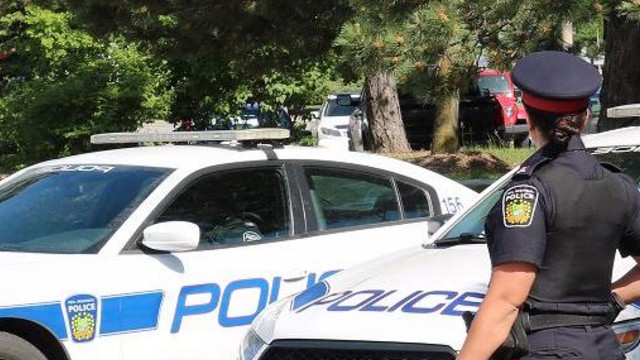Peel Police Weigh in on Gun Crime Increase in Mississauga
Published August 22, 2016 at 4:05 am

Late last week, insauga.com learned that gun crime appears to be increasing in Peel.
The reveal didn’t come as a terrible shock, as Peel Police Chief Jennifer Evans mentioned the worrying uptick earlier in the year and shooting incidents are dominating the news a little more than usual.
But while the news is not good by any means, it’s important to remain calm in the face of troubling statistics — and to remember that Mississauga (and Ontario overall) is very safe.
“Ontario [in general] is very safe,” says Constable Mark Fischer, public information officer, corporate communications with Peel Regional Police. “Crime rates have been going down, so [this increase] could be an anomaly or a spike, but we’re taking notice and want it to improve.”
According to the documents, there were 23 shooting victims in Peel in the first seven months of the year. That’s an increase of 187 per cent from 2015 to 2016. In 2014, there were four victims and in 2015, there were eight.
In 2014, there were 18 total incidents of shots being fired. In 2015, that number increased to 21. This year, there have been 43 incidents (this number does not include the very recent shooting at Sugar Daddy’s night club over the weekend).
As for stabbings, those are on the rise, too. In 2014, there were 93 stabbing incidents and two victims died of their injuries. In 2015, there were 104 stabbings and five people died. This year, there have been 114 incidents and one person has died.
In 2014, there were 184 robberies committed with a weapon. In 2015, there were 183. This year, there have been 240. Assaults have also risen, with 2,496 incidents being reported this year so far. In 2014, there were 2,289 assaults reported and in 2015, there were 2,238.
Gun-related homicides are up as well. Seven homicides were recorded this year, six of which were committed with a gun. In 2014, there were only two homicides between January and July and both were stabbing incidents. Last year, seven homicides were committed within the same time period, but none with guns.
So, what’s causing this uptick?
“I wish I knew,” says Const. Fischer. “I don’t have an answer as to why it’s going up. In Toronto, there was the Year of the Gun, for example. I don’t know if there is a specific thing you can point to beyond people not respecting human life.”
In Toronto, 2005 earned the notorious distinction of becoming the “Year of the Gun” after 52 gun-related deaths were recorded. That was the same year that 15-year-old Jane Creba was killed on Yonge St. on Boxing Day, the unintended victim of a gang-related shooting that happened in broad daylight in one of the city’s most bustling neighbourhoods.
Now, it looks like Toronto might be on track to break or match the unhappy record.
It’s also worth noting that crime in Canada in general was up in 2015, but the increase is largely attributed to growing crime rates in west coast cities.
According to this 2015 report, Mississauga is one of Canada’s safest cities, and even with this year’s crime increases causing concern, it’s not exactly becoming Detroit. Also, while crime in Canada did increase last year, it’s still lower than it was in 2005.
While it is indeed possible that 2016 — much like 2005 in Toronto — might be an anomaly in terms of gun violence in Peel, police are taking notice (and taking initiative).
“We have instituted a Community Mobilization Team,” explains Const. Fischer. “It originally began in Division 22 in Brampton, but we have teams in all four divisions in Peel. Generally, the teams consist of young officers with five to 10 years of experience and these teams go into certain problem areas and speak to the people to get the word out about trying to work together to solve the little problems that can become bigger problems.”
Const. Fischer also said that community is welcome to interact with police on social media.
“We have received comments from people thanking us for [our involvement].”
In many cases, the teams work by engaging with residents dealing with everyday problems. They’re not simply showing up when trouble is brewing and emergency measures are needed.
“For example, a team went to one area in Brampton with two high-rise apartments and went to a meeting between residents and management. We spoke to everyone about normal issues like garbage removal as well as criminal issues and they saw that we were involved in the community and wanted to help.”
Positive community involvement on the part of law enforcement is probably a step in the right direction, mostly because it connects police to residents — some of them potentially troubled — and breaks down barriers that foster distrust. It’s also important to examine the uptick carefully, determine possible causes, and address them meaningfully.
“We can hope the trend will reverse itself,” says Const. Fischer. “But we are looking into the spike.”
INsauga's Editorial Standards and Policies